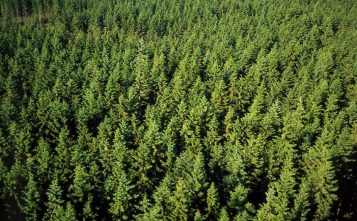With millions of cubic meters of timber still on the ground, and summer approaching, authorities and environmentalists in northern Italy were engaged in a race against time. Over six months have past since a storm called "Vaia" hit four northern regions with unusually warm winds exceeding 150 km per hour and strong rainfalls.
It was Oct. 29, and the event resulted in an unprecedented damage to forests in northeast Trentino, Friuli, and Veneto, and northwest Lombardy regions, which provide two thirds of all Italian timber.
No single event of extreme weather had ever caused such extensive destruction to Italian forests, and the reaction it triggered appeared, in its own way, unprecedented as well.
Public, private join forces
In the aftermath of the disaster, the Italian branch of the Programme for the Endorsement of Forest Certification (PEFC) launched a "fair supply chain" to try to mitigate the environmental and socio-economic impact.
Sirocco winds knocked down some 20 million trees -- over 8.5 million cubic meters of wood -- equal to the amount of wood harvested in 5 to 7 years of average silviculture, according to the Italian Ministry of Agriculture.
The affected areas stretched over 42,500 hectares of woods overall, and the regional governments estimated damages for 50 million euros (55.8 million U.S. dollars) in Lombardy, 93 million in Veneto, 250-300 million in Trentino, and 615 million in Friuli Venezia Giulia.
With the fair supply chain project, the PEFC urged public forestry consortia and mountain communities, and private firms to take action by collecting and purchasing as much timber as possible from the damaged forests at fair prices.
For all those willing to join the project, the timber would be made traceable through the specific logo "Filiera Solidale" (Fair Supply Chain) guaranteed by PEFC-Italy.
Up to mid-May, at least 17 private firms, 12 civil society organizations, and 20 public entities joined the project, yet promoters kept pushing ahead.
"Over six months after Vaia, we still have almost 5 million cubic meters of wood to collect," PEFC-Italy secretary general Antonio Brunori told Xinhua.
"We have to move fast, because knocked-down timber will start being attacked by insects in the summer months, with a further risk that diseases may further spread to healthy trees," he explained.
Adding to the risk of parasites and fungus, timber lying on the ground would anyway become useless for the industry within two years, according to the forest sciences researcher.
The campaign also aimed at developing a stronger national supply chain by boosting local resources, which made sense since Italy was one of the world's largest furniture manufactures, but imported 80 percent of timber, according to industrial furniture association Federlegno-Arredo.
A third goal was to further boost the certification of sustainably managed forests, which today amounted to 9.8 percent of Italy's 10.9 million hectares of forests, according to the 2018 PEFC report.
Overall, environmentalists hoped this approach would boost Italian forests' resilience to climate change.



Leave a Reply